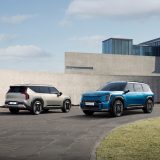Renault 5 2024 review: A fun, affordable electric car to ignite the small EV market
A bright hope
The 1970s was a bleak time. I wasn’t there myself but I’ve watched Life on Mars and Rising Damp, and seen the interior decor and fashion catalogue colour palettes, so I know it to be 100 per cent true.
One of the slightly less flippant arguments to lend a little weight to this wild generalisation, is that during the ’70s, most of the world had to endure a crippling fuel crisis. Well, two, in fact, but sparked initially, in 1973, by Arabian petrol producers throttling supply to the United States and the Netherlands, which supported Israel after Egypt and Syria attacked the country on Yom Kippur. Things weren’t helped in 1979 during the Iranian Revolution. Soon, there were fuel shortages and cars queuing round the block for petrol.
The original Renault 5 arrived right at the beginning of this period, and soon, in current Renault boss Luca de Meo’s words, “people were afraid that oil would disappear or, at least that it would become scarce and therefore expensive.” Small, fuel efficient cars were seen as the answer in Europe at the time, and the little Renault 5 did extremely well as a result. It was affordable, efficient, spacious and “edgy”, and in 1973 Renault shifted 100,000 of the things. By 1983, when it was removed from showrooms, Renault had sold 5.5m R5s.
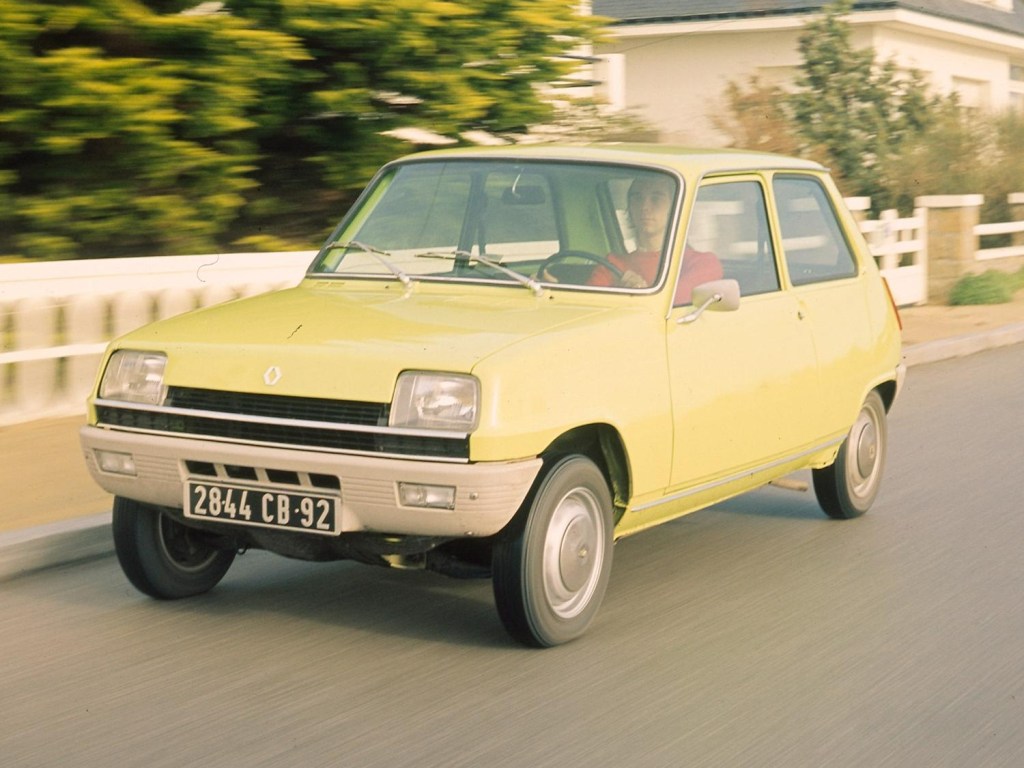
There are echoes of that time today. Iran, Israel, Syria… all in the news again, for tragic reasons, and energy prices rocketed after Russia invaded Ukraine, of course. It comes at a time when the West is trying to wean itself off oil altogether.
All of which means it’s rather apposite that the Renault 5 is back, and this time in internal combustion-sidestepping pure-electric form.
There’s a small issue, though. It’s no secret that electric vehicles haven’t been selling as well in Europe as carmakers (and lawmakers) had hoped. While some petrolheads vow that they will never go electric, most drivers will tell you that they will switch from petrol or diesel at some point… just not yet, citing hurdles such as charging infrastructure and high purchase costs.
Well, the new Renault 5 could be a car that helps set ablaze the market for small, affordable electric cars, according to the French carmaker’s marketing chief. In fact, he described it to me as a “weapon” in the push for mainstream EV adoption.
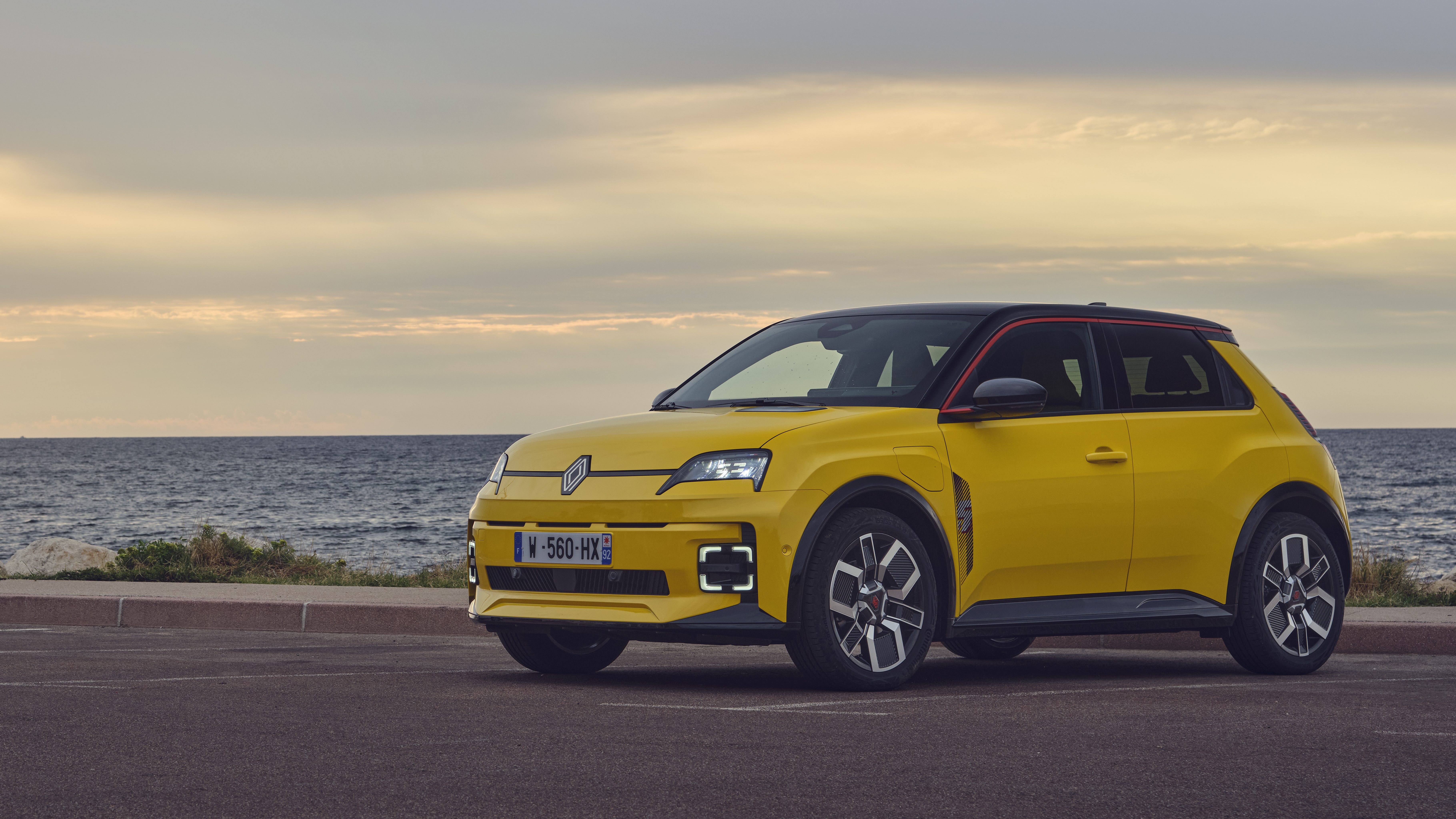
At the car’s launch in Nice, Arnold Belloni said that reading the independent motoring journalist commentary comparing the new R5 to rivals such as the Mini Electric, Peugeot e-208 and Fiat 500e, gave him huge amounts of confidence. He really believes this car will be a winner.
Well, let’s try not get ahead of ourselves, but there are many reasons to think he may be right. For a start, by jingo it looks good, bringing a 50-year-old design classic bursting into the 21st century. Another reason it could sell like gateaux chaud is that it makes complete sense on paper. It can go farther than the competition on a charge (up to 255 miles), costs less (prices start at just £22,995), and has five seats and five doors, making it practical and frugal as well as eco-friendly.
I wouldn’t bet against de Meo, either. He is the man who oversaw the relaunch of the Fiat 500 during his time at the Italian brand — a car thought of as the one that saved Fiat. He also, during his next stint at Volkswagen Group, introduced profitable SUVs and spun Cupra off from Seat, which both proved to be significant successes. Now he’s reviving Renault, spotting opportunities that previous bosses missed… or worse, actively avoided.






The Renault 5 is such a project. The story goes that de Meo, on the day after he took over as CEO, was being given a tour of the Guyancourt Technocentre, where Renault designs, builds and tests its “vehicles of tomorrow”. He spotted a full-size model in bright orange — strategically placed so that he couldn’t miss it — that looked like an R5 and wanted to know what it was. He was told it was just an exploratory study by a designer that was thrown out because the board didn’t want to go down the retro design route. As de Meo tells it, he commissioned the car there and then.
De Meo, then, is a man who acts on instinct, and they’re often good. Under his direction, we’ve now got a revised Scenic EV — which I reckon is an excellent package — and on the Renault stand at this week’s Paris motor show is a new version of the Renault 4 — the R5’s big brother. That’s two fingers up to the old regime, I’d say.
Importantly, when it comes to the new Renault 5, that original design study has been closely adhered to in bringing it to the road, both on the outside and inside. The interior is a lively reimagining of the original car’s characterful cabin, with the oblong driver’s display and vertical stripes on the dashboard, but with fully digital instrumentation and a touchscreen infotainment system that runs Android Auto and Apple Carplay as standard.






On the mid-range Techno and range-topping Iconic Five spec models, Google is built into the system, which means that the navigation works with the car’s electric drivetrain to help plan routes based on remaining range, and should you need to recharge en route it’ll automatically precondition the battery for a speedier top-up.
Two battery sizes are available, 40kWh and 52kWh, with rapid DC charging at 80kW and 100kW respectively, which means you can get both packs from 15 to 80 per cent in around 30 minutes. One cool piece of design is that the 5 logo on the front lights up to indicate charge level, with each of the five bars representing 20 per cent capacity.


Officially the larger battery version that I tested can manage 255 miles per charge over a mix of roads, though in the real world expect it to be less than that, especially in cold weather or if you enjoy driving spiritedly. I can say from my test, driving quickly on mountain roads and around town, that a full battery showed the full 255 miles of predicted range when I set off and 145 miles remaining when I returned, with an indicated 51 per cent left in the battery. If true, that means that I could possibly have squeezed 290 miles out of it; even in the warm climes of the south of France, that would be extraordinary. For many, the 40kWh battery may be good enough, as its official range is still a very decent 194 miles.
You can also plug in at home for an 11kW AC charge, and — emphasising the modernity of the new R5 — if you buy the Renault Mobilize wallbox and have a compatible energy tariff, you can sell energy back to your supplier at time of peak demand as well as draw it out. Not only could this save you money but it can help balance the grid itself.





This bi-directional charging system also means you can, via a connector that attaches to the charging port, plug in three-pin appliances and run them off the car. A handful of other carmakers, such as Kia and Hyundai, also allow this, but it’s not yet commonplace, especially in small cars, and could be a deal-clincher for buyers.
Of course, carmakers want to shout about their latest EV’s environmental credentials, and the Renault 5 ticks the boxes here, too. For the time being, its battery modules come from China, yes, (although a battery “gigafactory” in France should come online next year) but the casings are produced and assembled in northern France, and the rest of the components come from Europe. The whole car is put together at Renault’s factory in Douai. That cuts down on CO2 during the production process.
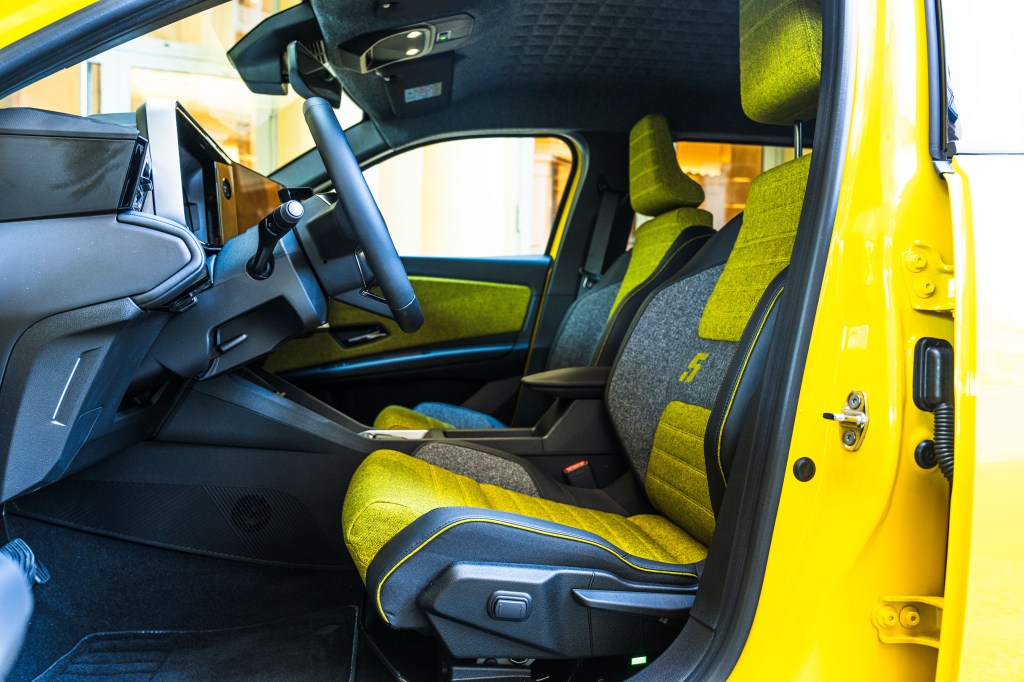
What’s more, the fabrics used inside the Techno and Iconic Five models are 100 per cent recycled plastic, including (in another nod to the original R5) the H-pattern seats. The whole car, Renault says, uses 19.4 per cent recycled materials.
Customisation could be another key selling point. The drive select lever is shaped like a lipstick case deliberately, and owners can slip bespoke cases over it to give it their own stylistic flourish. Other colourful accessories for the interior allow R5 buyers brighten their cars up, too. The show car doing the rounds in the UK has a union flag motif on the roof but Renault isn’t planning to make that an option (unless you all beg for it); a number of other roof stickers will be available, though, so every R5 will have its own distinct character — a quality sadly lacking in many modern boxes on wheels.
The fun really starts when you get out on the road, though. The R5 can’t be described as a hot hatch but it’s got a surprising amount of get-up-and-go, with an eagerness to match its playful aesthetics. You can switch between Eco, Comfort, Sport and Individual modes, which changes the feel through the wheel and responsiveness of the pedals.
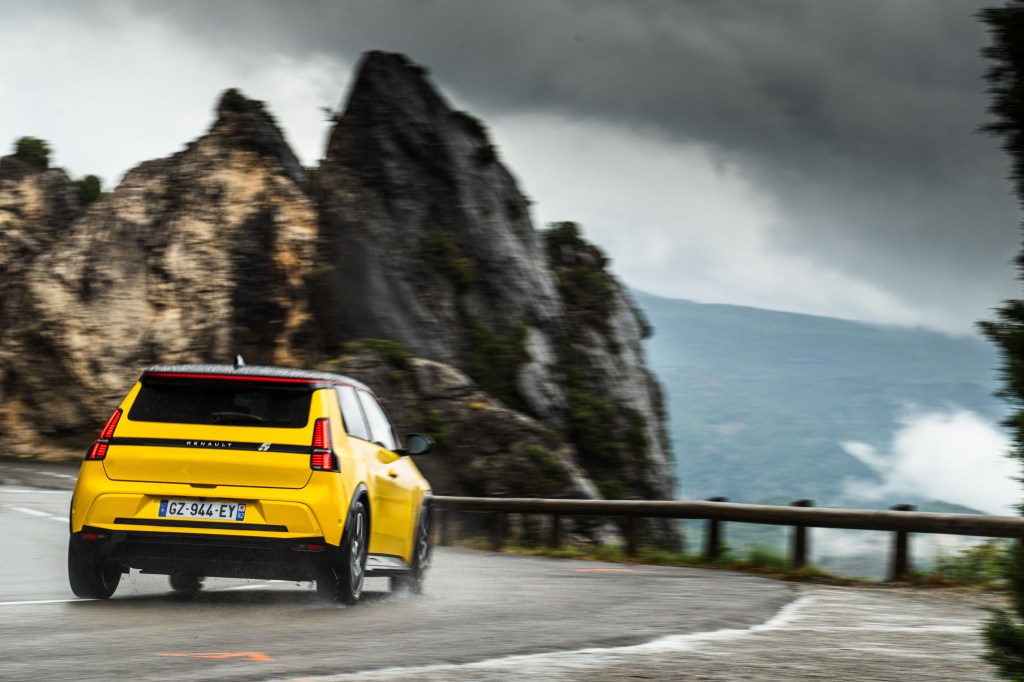
On the twisty roads north of Grasse, France — which were wet and greasy on day one and dry and sunbathed on day two — my 52kWh Iconic Five R5 was locked in Sport mode the whole time, and the car felt planted on the road, with occasional wheelslip under hard acceleration during the most inclement moments kept in check by the traction control. Impressively, the R5 will do so without overly dulling the power delivery, which is a bugbear of some other EVs — the Renault will find traction and start pulling again.
It’s a car that suits these kinds of switchback roads, with its low weight (1,500kg, which is imp-like for an EV with this kind of range) and low centre of gravity (the battery is under the floor) keeping body roll to a minimum, the beautifully-judged suspension soaking up ruts without making it feel blancmange-like, the front-wheel-drive nature working well when things get slippery and the clever multilink rear set-up resulting in race-tuned levels of control.
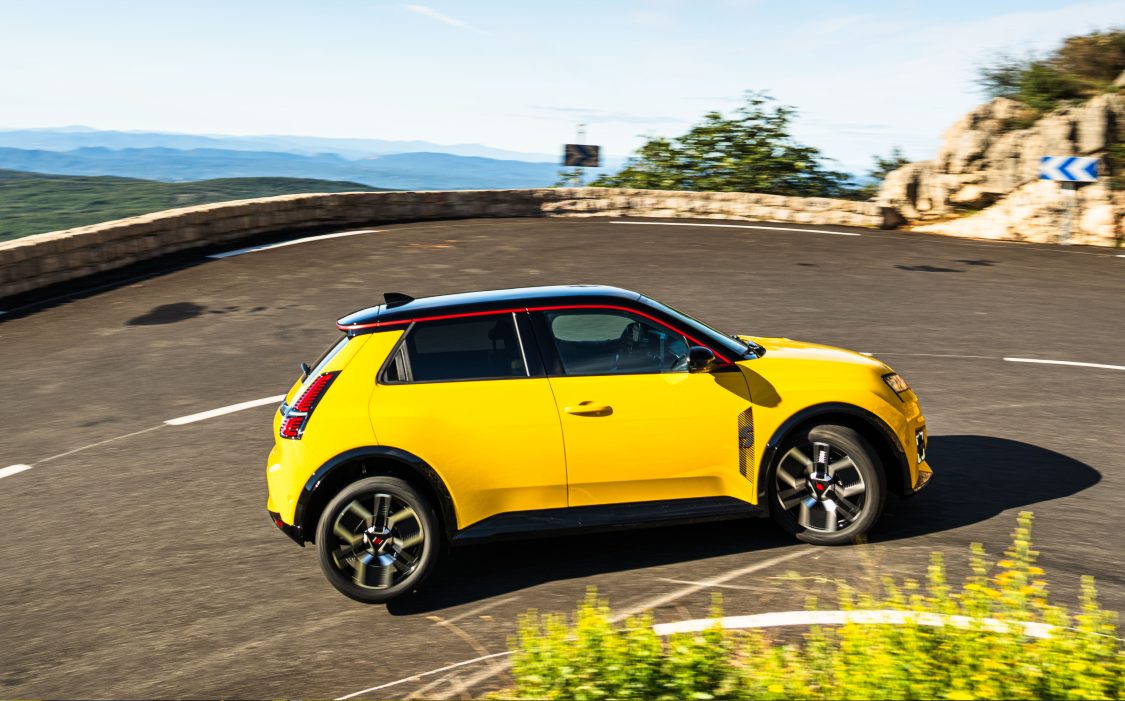
The steering? In Sport mode, weighty enough to engage and providing more feedback than one might expect. In short, it can be thrown around with confidence and I thoroughly enjoyed treating it like my first car, a Mini 850, on those entertaining mountain roads.
What’s more, the electric motor isn’t choked by the thinner atmosphere as you climb higher, as internal combustion engines are, meaning I had just as much poke as I crested the Route Napoleon as I did at its base near Grasse.
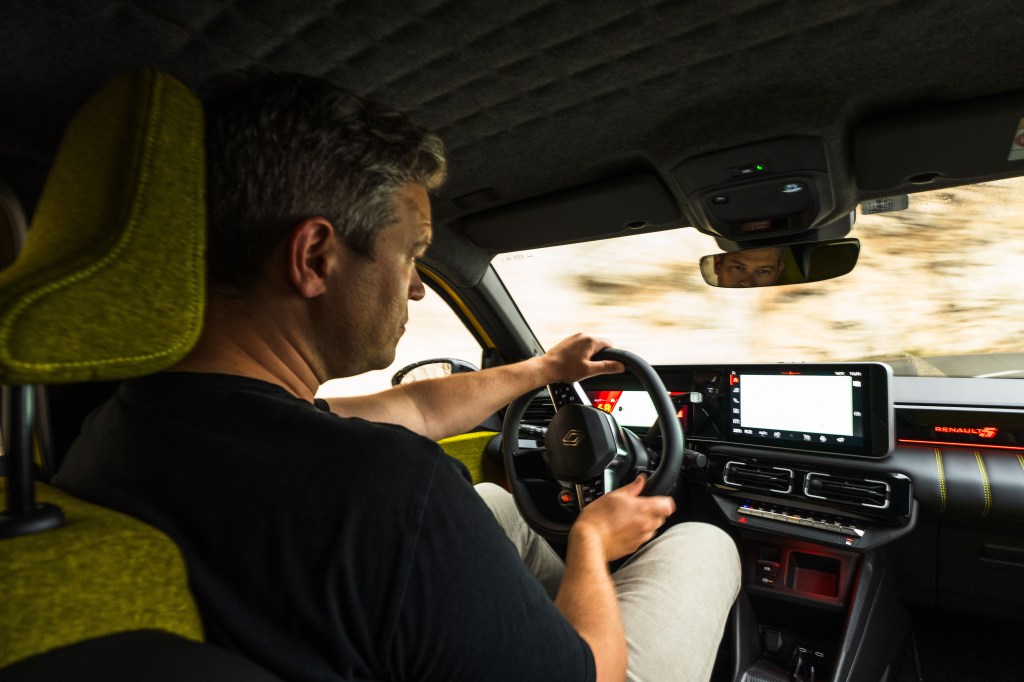
If there’s a criticism of the way it feels to drive, it’s in the braking, particularly when you’ve turned on energy recuperation, as there a small lack of consistency and the R5 can feel like it’s snatching at times. And while I’m nitpicking, the rear-view mirror obscures the view out of the windscreen for tall drivers like myself, and the rear window is about the size of a letterbox. And Renault’s AI avatar “Reno” is more annoying than useful, popping up at inopportune moments to ask how if he can help with anything. “No, Reno, bugger off.”
But one bit of tech that Renault deserves a medal for is its “Perso Mode”, which is accessed via a button behind the steering wheel and allows you to customise the driver aids to your own preference. In practical terms this means that, with a quick, easily-accessible double tap, you can silence the mandated speed alerts and lane-keeping assists, which are a bloody nuisance a lot of the time — and often get the speed limits wrong, anyway.
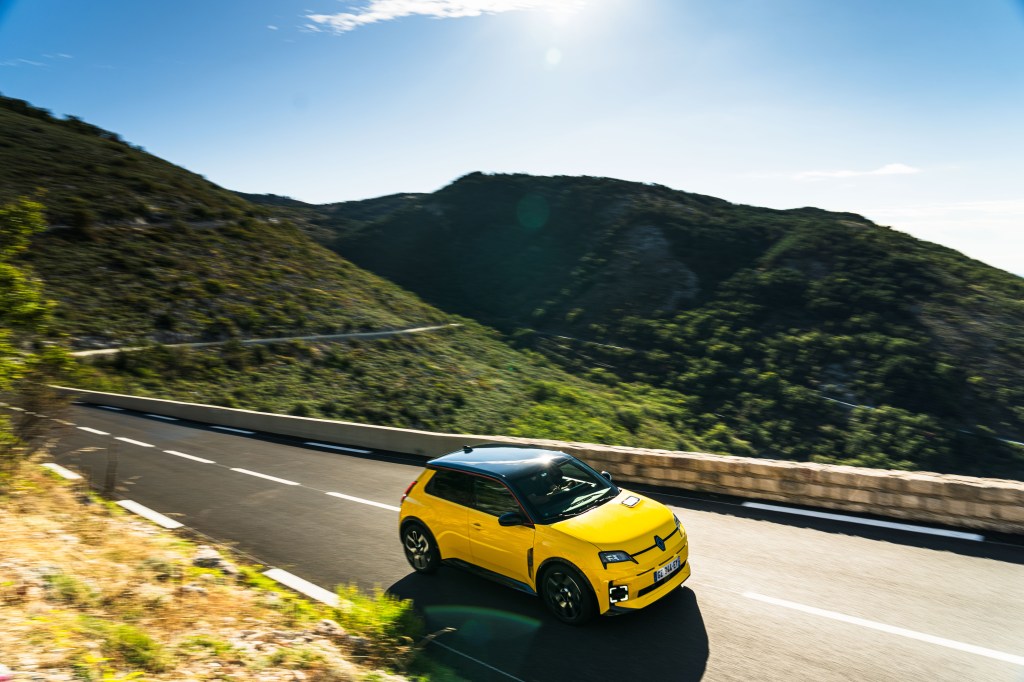
What the new Renault 5 is, then is a burst of sunshine in the small EV market, and not just when painted in the bright yellow hue of my test car. Time will tell if it will be the “weapon” that bursts through into the mainstream but it gets a strong recommendation from me: fun to look at, fun to drive, relatively practical and at the right price. This is a very welcome and superbly executed return for a beloved motoring nameplate.
Related articles
- If you were interested in this review of the new Renault 5 electric car, you might like to check out our review of its chief rival, the 2024 Mini Cooper SE
- Also take a look at what we said about the Peugeot e-208
- And don’t miss five of our favourite electric cars (other than the R5) on sale this year
Latest articles
- Porsche 911 Carrera S 2025 review: Harder, better and faster – but is it the best 911?
- F1 2025 calendar and race reports: The new Formula One season as it happens
- Seven great automotive events to visit this summer, from F1 to art and champagne
- Watch new Porsche 911 GT3 smash Nürburgring record for manual cars
- Skoda Elroq 2025 review: Czech carmaker can’t seem to miss with its electric family cars
- Five best electric cars to buy in 2025
- Should I buy a diesel car in 2025?
- Zeekr 7X AWD 2025 review: A fast, spacious and high tech premium SUV — but someone call the chassis chief
- Denza Z9GT 2025 review: Flawed but sleek 1,062bhp shooting brake from BYD’s luxury arm







